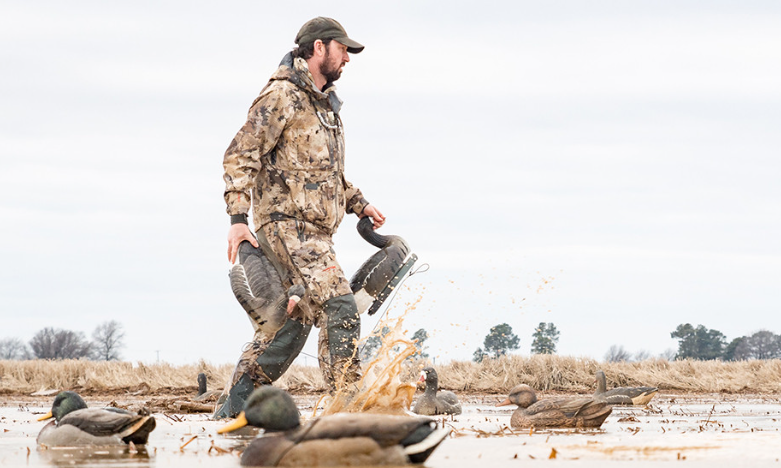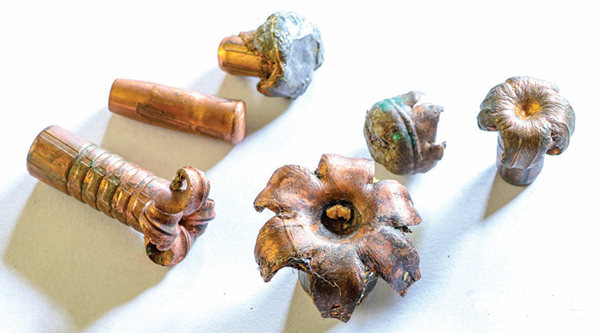The .260 Remington and 6.5 Creedmoor are very similar rounds. Both are 6.5mm bullet diameter and compatible with .308 Winchester rifles with a barrel switch.
The .260 Remington is well-known within the hunting circles, the 6.5 Creedmoor is basically the new unicorn of the long range precision shooting crowd.
New shooters embrace the 6.5 Creedmoor without having to know how to reload. The 6.5 Creedmoor was design to be competitive at the top level of high-powered long range competition using factory ammunition plus being novice reloader friendly. The other factors that made this cartridge more appealing to the competitive shooter is the low recoil and factory loads would be no more expensive than the .308 Winchester.
Pros & Cons

Both cartridges have the ability to hit a target at 700 to 1000 yards with a well built rifle.
The .260 Remington was design for a bolt-action rifle. For the semi-auto finger, the 6.5 Creedmoor prevails.
.260 Remington Pros
Brass easily formed from the 308 family
Most case capacity of the three cartridges
Exactly the same body diameter, taper, and OAL as .308
Cons
Brass either very expensive or marginal quality
Very limited supply of long-range factory match loads
Sentiments from seasoned long range shooters – The .260 Remington is a solid performer for long-range matches, with good barrel life and 300WM-like ballistics. The .260 is the status quo that 6.5 Creedmoor have to go up against and prove their worth.
6.5 Creedmoor Pros
Almost identical case capacity to .260 Remington
Long-range factory loads to be available from Hornady
Quality yet affordable brass to be available
Load recipe printed on factory ammo boxes
Better case design than .260
Cons
Still new. Component availability to be proven
Is different than .260 but doesn’t offer substantially more performance
Theres a confusion that some shooters think that good match cartridges are also good hunting cartridges. These competition cartridges are usually designed with specific features for whatever reasons that has nothing to do with hunting cartridges and hunting rifles.
Hornady has the right mind-set to make 6.5 Creedmoor a success in the competitive and practical market, unlike Remington who basically let the .260 languish in a few hunting rifles.
Case Capacity
If the two cartridges of the same caliber are loaded to the same maximum average pressure (MAP) with the same weight bullet. Logically, the case with the most powder can drive the bullet to a higher velocity. Resulting in more energy and a flatter trajectory downrange.
When you compare this to the .308 and .30-06, if the .30-06 had a 10% greater case capacity. The .30-06 is the superior performer.
With the .260 Remington you can squeeze another 50 fps into the casing. So, it should be no surprise that the 6.5mm Creedmoor is, ballistically, inherently inferior to the larger .260 Remington.
The 6.5mm Creedmoor was designed as a match cartridge, not for hunting. Its case was shortened to allow the neck to grip very long ogive match bullets with a cartridge overall length that would allow its use in short action target rifles.
Both of these cartridges are designed to be used in short (.308 length) rifle actions.
Basically, reloaders with modern rifles load both calibers to the same MAP with the same bullets, in which case the .260 will always be first over the 6.5mm Creedmoor in performance.
From the standpoint of the game hunter, both cartridges do the same thing and no big game animal will know the difference between them.
Availability
The 6.5 Creedmoor is easier to find due to the popularity. The .260 Remington is usually cheaper by 50% compared to the Creedmoor round. Another thing to note is that the 6.5 Creedmoor has a “softer” brass which means that it doesn’t last as long or have as high of performance.
Here’s a list of factory hunting loads using 139-143 grain bullets along with the catalog muzzle velocity (fps) and muzzle energy (ft. lbs.) from 24″ test barrels.
6.5mm Creedmoor:
Federal: n/a
Hornady 140 grain BTHP: MV 2690 fps, ME 2249 ft. lbs.
Hornady 143 grain ELD-X: MV 2700 fps, ME 2315 ft. lbs.
Norma: n/a
Nosler 140 grain BT: MV 2650 fps, ME 2183 ft. lbs.
Remington: n/a
Winchester: n/a
.260 Remington:
Federal 140 grain BTSP: MV 2700 fps, ME 2350 ft. lbs.
Hornady: n/a
Norma: n/a
Nosler 140 grain PT: MV 2725 fps, ME 2308 ft. lbs.
Remington 140 grain C-L PSP: MV 2750 fps, ME 2351 ft. lbs.
Winchester: n/a
Parting Shot
At the end of the day, it really depends on personal preference. Take into consideration which bullets you plan to shoot, and whether or not you are willing to switch them to accommodate aesthetics or if you are hard lined on performance and personal comfort.
 Anyone with a rifle in any of these two calibers would be silly to ditch a working system to switch to another. They are that similar. Make your choice based on component availability and price.
Anyone with a rifle in any of these two calibers would be silly to ditch a working system to switch to another. They are that similar. Make your choice based on component availability and price.
The latest caliber or gear is no substitute for experience and skill. Rifles and cartridges don’t make hits — shooters do.
The .260 Remington is well-known within the hunting circles, the 6.5 Creedmoor is basically the new unicorn of the long range precision shooting crowd.
New shooters embrace the 6.5 Creedmoor without having to know how to reload. The 6.5 Creedmoor was design to be competitive at the top level of high-powered long range competition using factory ammunition plus being novice reloader friendly. The other factors that made this cartridge more appealing to the competitive shooter is the low recoil and factory loads would be no more expensive than the .308 Winchester.
Pros & Cons

Both cartridges have the ability to hit a target at 700 to 1000 yards with a well built rifle.
The .260 Remington was design for a bolt-action rifle. For the semi-auto finger, the 6.5 Creedmoor prevails.
.260 Remington Pros
Brass easily formed from the 308 family
Most case capacity of the three cartridges
Exactly the same body diameter, taper, and OAL as .308
Cons
Brass either very expensive or marginal quality
Very limited supply of long-range factory match loads
Sentiments from seasoned long range shooters – The .260 Remington is a solid performer for long-range matches, with good barrel life and 300WM-like ballistics. The .260 is the status quo that 6.5 Creedmoor have to go up against and prove their worth.
6.5 Creedmoor Pros
Almost identical case capacity to .260 Remington
Long-range factory loads to be available from Hornady
Quality yet affordable brass to be available
Load recipe printed on factory ammo boxes
Better case design than .260
Cons
Still new. Component availability to be proven
Is different than .260 but doesn’t offer substantially more performance
Theres a confusion that some shooters think that good match cartridges are also good hunting cartridges. These competition cartridges are usually designed with specific features for whatever reasons that has nothing to do with hunting cartridges and hunting rifles.
Hornady has the right mind-set to make 6.5 Creedmoor a success in the competitive and practical market, unlike Remington who basically let the .260 languish in a few hunting rifles.
Case Capacity
If the two cartridges of the same caliber are loaded to the same maximum average pressure (MAP) with the same weight bullet. Logically, the case with the most powder can drive the bullet to a higher velocity. Resulting in more energy and a flatter trajectory downrange.
When you compare this to the .308 and .30-06, if the .30-06 had a 10% greater case capacity. The .30-06 is the superior performer.
With the .260 Remington you can squeeze another 50 fps into the casing. So, it should be no surprise that the 6.5mm Creedmoor is, ballistically, inherently inferior to the larger .260 Remington.
The 6.5mm Creedmoor was designed as a match cartridge, not for hunting. Its case was shortened to allow the neck to grip very long ogive match bullets with a cartridge overall length that would allow its use in short action target rifles.
Both of these cartridges are designed to be used in short (.308 length) rifle actions.
Basically, reloaders with modern rifles load both calibers to the same MAP with the same bullets, in which case the .260 will always be first over the 6.5mm Creedmoor in performance.
From the standpoint of the game hunter, both cartridges do the same thing and no big game animal will know the difference between them.
Availability
The 6.5 Creedmoor is easier to find due to the popularity. The .260 Remington is usually cheaper by 50% compared to the Creedmoor round. Another thing to note is that the 6.5 Creedmoor has a “softer” brass which means that it doesn’t last as long or have as high of performance.
Here’s a list of factory hunting loads using 139-143 grain bullets along with the catalog muzzle velocity (fps) and muzzle energy (ft. lbs.) from 24″ test barrels.
6.5mm Creedmoor:
Federal: n/a
Hornady 140 grain BTHP: MV 2690 fps, ME 2249 ft. lbs.
Hornady 143 grain ELD-X: MV 2700 fps, ME 2315 ft. lbs.
Norma: n/a
Nosler 140 grain BT: MV 2650 fps, ME 2183 ft. lbs.
Remington: n/a
Winchester: n/a
.260 Remington:
Federal 140 grain BTSP: MV 2700 fps, ME 2350 ft. lbs.
Hornady: n/a
Norma: n/a
Nosler 140 grain PT: MV 2725 fps, ME 2308 ft. lbs.
Remington 140 grain C-L PSP: MV 2750 fps, ME 2351 ft. lbs.
Winchester: n/a
Parting Shot
At the end of the day, it really depends on personal preference. Take into consideration which bullets you plan to shoot, and whether or not you are willing to switch them to accommodate aesthetics or if you are hard lined on performance and personal comfort.
 Anyone with a rifle in any of these two calibers would be silly to ditch a working system to switch to another. They are that similar. Make your choice based on component availability and price.
Anyone with a rifle in any of these two calibers would be silly to ditch a working system to switch to another. They are that similar. Make your choice based on component availability and price.The latest caliber or gear is no substitute for experience and skill. Rifles and cartridges don’t make hits — shooters do.









